After the fall of Sheikh Hasina's regime in Bangladesh in 2024, the country was thrust into a period of instability and chaos. With the vacuum left by her departure, political dynamics shifted dramatically, bringing to power an alliance led by Nobel laureate Dr. Muhammad Yunus. What was initially perceived as a hopeful shift towards reform soon turned into a nightmare, as allegations of brutality, suppression, and collaboration with Islamic extremist groups surfaced, plunging the nation into further turmoil. Which has been seen as a Rise of Monsterous Autocrate in Bangladesh.

01
While looking back, we do see a pivotal moment in the conspiracy was the anti-quota reform movement, which started as a peaceful protest by students demanding changes to public sector job quotas. Initially focused on legitimate grievances, the movement was soon hijacked by political actors determined to destabilize the government. Opposition leaders expertly used social media and psychological tactics to manipulate public anger, particularly among the youth, transforming the movement into a broader protest against Hasina’s government. Criticism of Hasina’s policies and a surge in anti-India sentiment quickly came to the forefront of the demonstrations. As the protests escalated, the government resorted to increasingly heavy-handed measures. The decision to use the ruling party’s student wing the Bangladesh Chhatra League (BCL) to counter the protesters led to an eruption of violent clashes and hundreds of deaths between July and August in the hands of multiple anti-AL government secret agents. While projecting the above scenarios, one must admit that Sheikh Hasina’s government was not without its faults in creating the background of her downfall. Relating to the good governance issues, and crackdowns on dissent, contributed to her eventual demise. In addition, the whole result was an orchestrated conspiracy allegedly involving both national and international actors. The consequences of this plot are now being felt across a deeply fractured Bangladesh, where chaos reigns and the future remains uncertain.
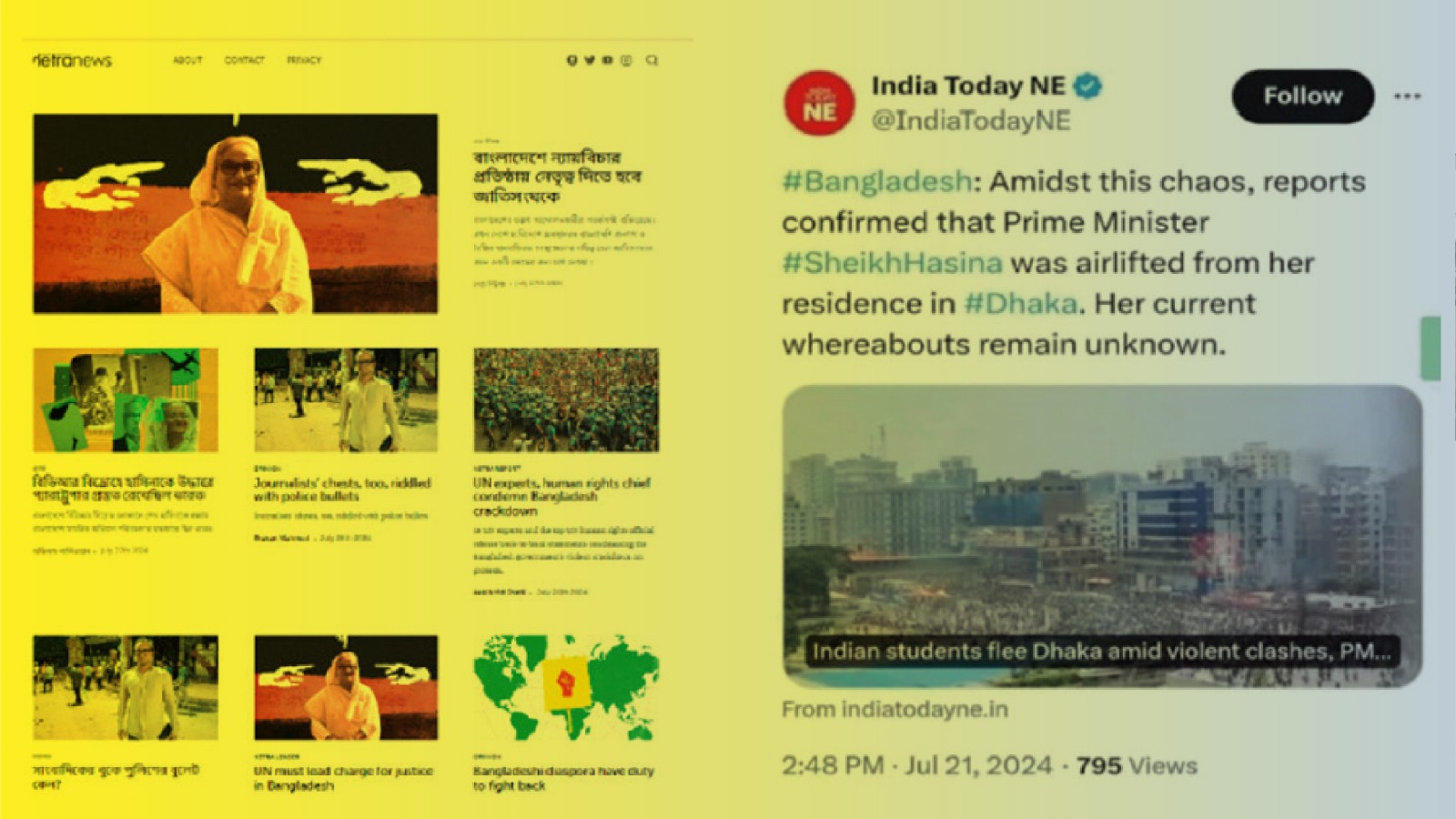
02
Dr. Yunus, known internationally for his microcredit initiatives through Grameen Bank and his advocacy for social business, emerged as an influential political figure following Hasina’s fall. His leadership appealed to many as a potential departure from the alleged corruption and authoritarian tendencies of the Awami League government. However, the euphoria was short-lived. Almost immediately after assuming power, Yunus' government was accused of orchestrating brutal crackdowns on political opponents, civil society activists, and members of the former government, and on record, more than one hundred false murder cases have been filed against Sheikh Haina and her top leaders were in different power positions. Supporters of the former government, including citizens and activists, were forced into hiding with their families, fearing false charges and harassment if they drew attention to themselves.
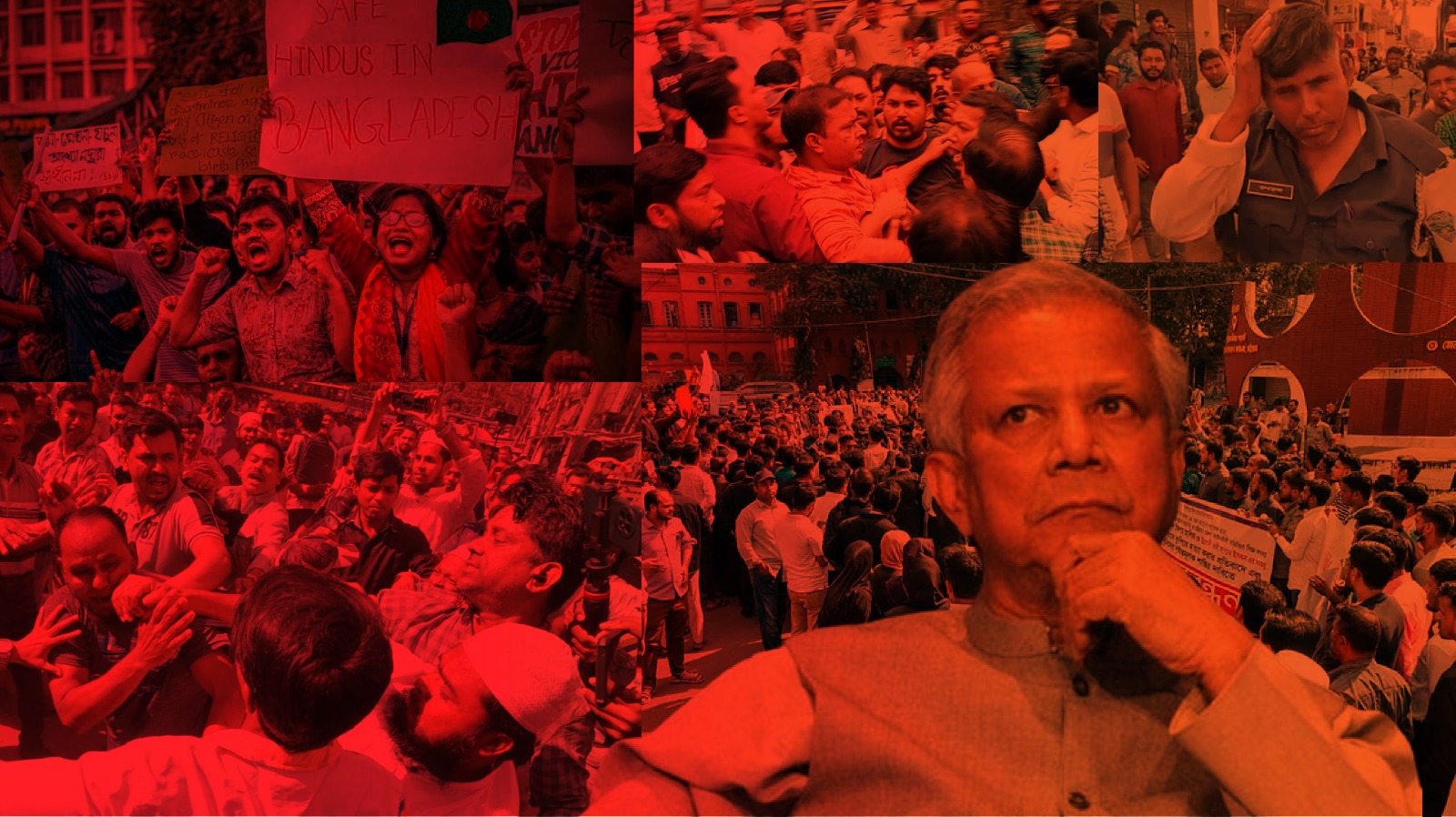
03
However, one of the most controversial aspects of the post-Hasina regime was the alleged collaboration between Yunus' government and Islamic extremist groups, particularly factions tied to Jamaat-e-Islami and other Islamist militants. The alliance seemed paradoxical at first, given Yunus' progressive image. However, behind the scenes, there appeared to be a calculated strategy to consolidate power by leveraging the influence of Islamist factions that had been marginalized during Hasina's secular rule. Islamic terrorist organizations, which Hasina’s administration had long suppressed, saw an opportunity to regain political clout under the Yunus-led regime. In return for their support, these groups were given leeway to propagate their ideologies, resulting in a sharp rise in religious intolerance and violence. Reports of attacks on minority communities, including Hindus, Buddhists, and secular activists, became alarmingly common. The government's alleged complicity in these attacks sent shockwaves through the international community. Many questioned how a Nobel Peace Prize winner could align himself with groups responsible for promoting terror and religious violence. However, for Yunus, the partnership with Islamists was a pragmatic decision that allowed him to cement his power in the volatile political landscape of post-Hasina Bangladesh.
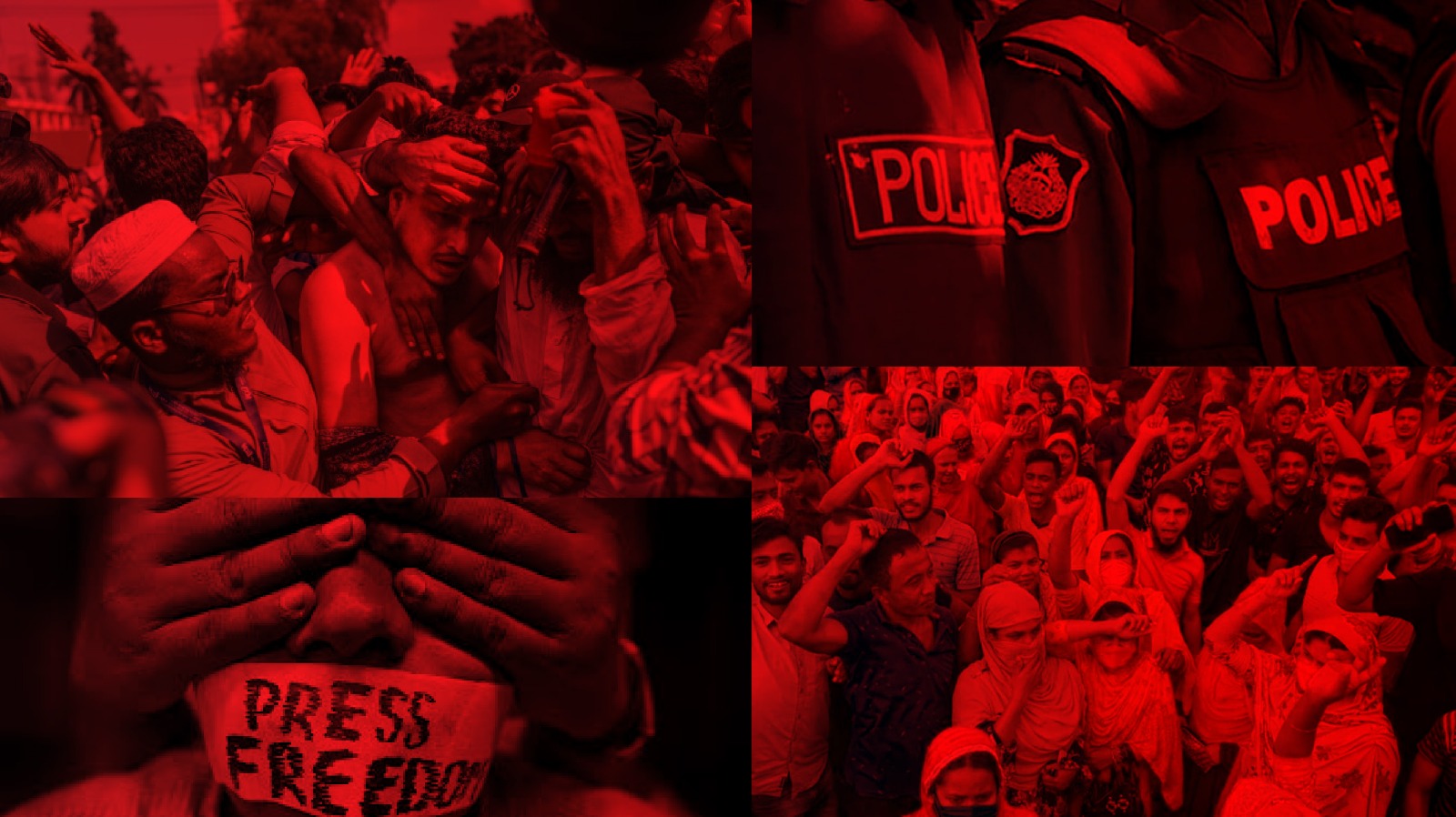
04
The Dr. Yunus regime's brutality extended beyond mere political repression. Under the banner of "restoring order," the government launched large-scale military operations in areas where opposition to the regime was strong. Densely populated urban neighborhoods and rural regions became battlegrounds, with security forces using heavy-handed tactics to root out socalled insurgents and dissidents. Civilians, including women and children, were often caught in the crossfire. Media censorship became widespread, with any dissenting voices swiftly silenced. Journalists and human rights defenders who dared to speak out against the regime’s human rights abuses were targeted, with many forced to flee the country to avoid persecution.
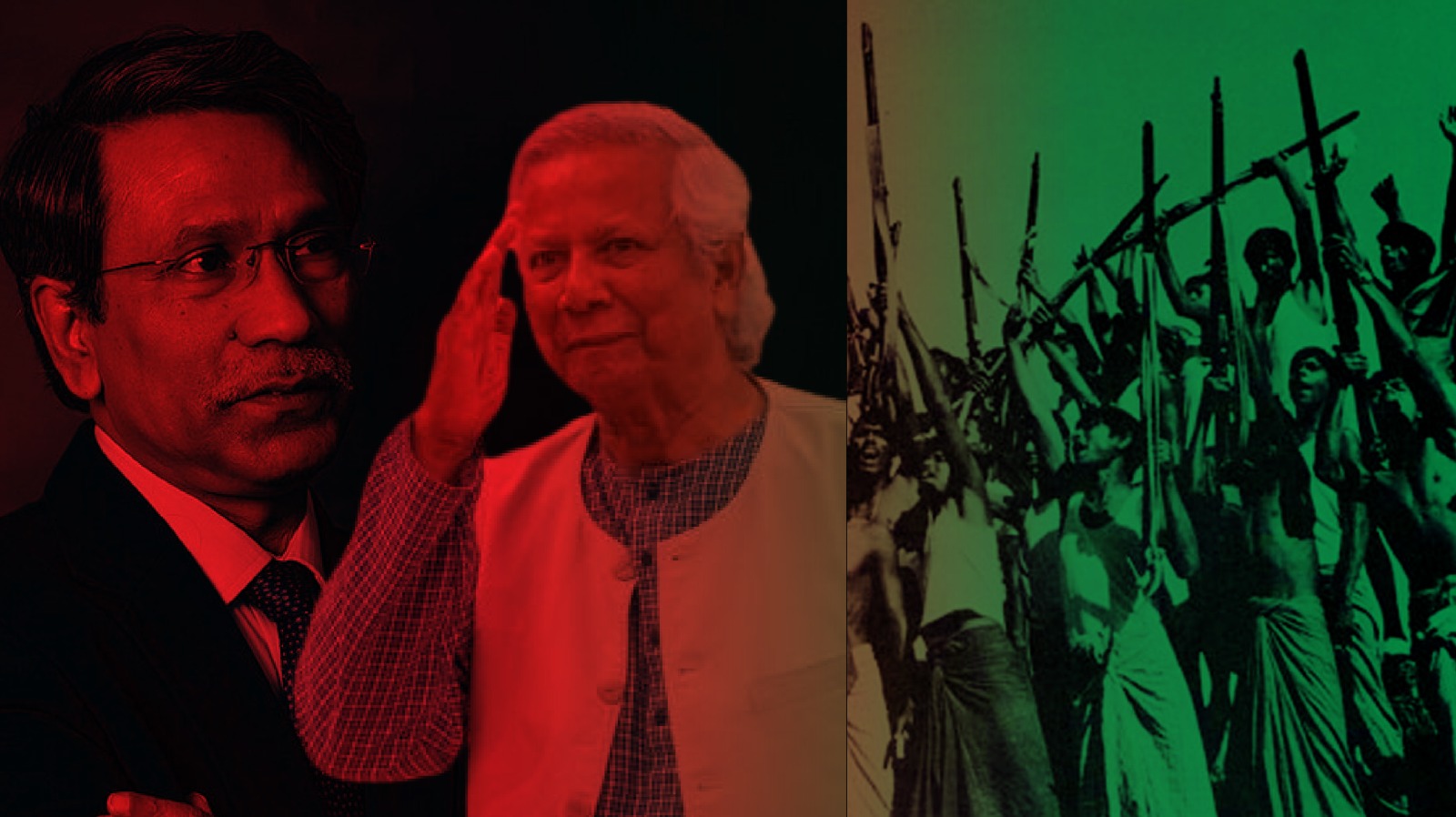
05
The Dr. Yunus regime's brutality extended beyond mere political repression. Under the banner of "restoring order," the government launched large-scale military operations in areas where opposition to the regime was strong. Densely populated urban neighborhoods and rural regions became battlegrounds, with security forces using heavy-handed tactics to root out socalled insurgents and dissidents. Civilians, including women and children, were often caught in the crossfire. Media censorship became widespread, with any dissenting voices swiftly silenced. Journalists and human rights defenders who dared to speak out against the regime’s human rights abuses were targeted, with many forced to flee the country to avoid persecution.
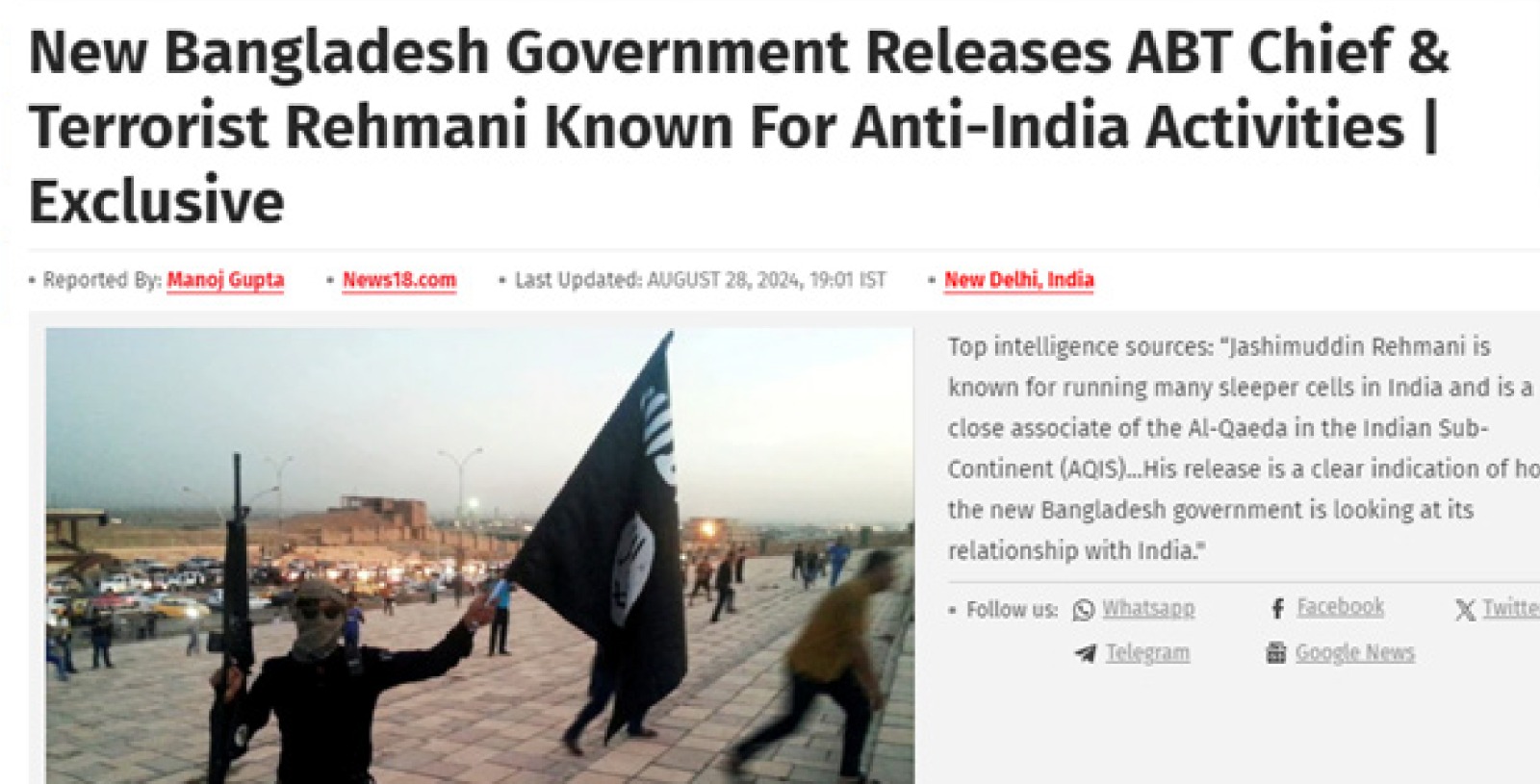
06
The dissolution of Parliament in Bangladesh marked the collapse of democratic governance,accompanied by the unprecedented vacancy of the Speaker's chair. This dissolution was not an isolated act but part of a broader agenda to dismantle key pillars of the state's institutional framework. Alongside this, the abolition of all 493 Upazila Chairmen further dismantled the local governance framework, effectively erasing decentralized political representation. Under the Dr. Yunus-led government, power is aggressively centralized as they have proceeded with systemic actions against the democratic norms in a pattern of restructuring. To establish totalitarian control, the present regime arbitrarily dismissed 33 secretaries and 11 ambassadors; while nearly 300 secretaries, additional secretaries, and police commissioners were appointed without due process. All these moves aimed to secure control over the civil and military bureaucracy, eroding democratic accountability and institutional integrity. One of the most alarming consequences of Hasina’s downfall was the release of notorious criminals, including underground leaders and Islamic militants, who were freed during the protests. These individuals have since formed private militias, targeting Awami League supporters and consolidating the new regime’s power. The rise of Islamist forces marks a significant shift in Bangladesh’s political landscape, pushing the country further from the secular, democratic ideals that the Awami League once championed. In the aftermath of the government’s oust, Bangladesh descended into disorder. The financial sector was in turmoil, with key figures in Bangladesh Bank removed, and the media came under strict control. Press freedom disappeared, with editors and journalists either detained or forced into hiding. The garment industry, a cornerstone of Bangladesh’s economy, suffered immensely, with over 100 factories shutting down, leading to widespread unemployment. Law enforcement largely broke down, with police officers refusing to report for duty due to safety concerns.
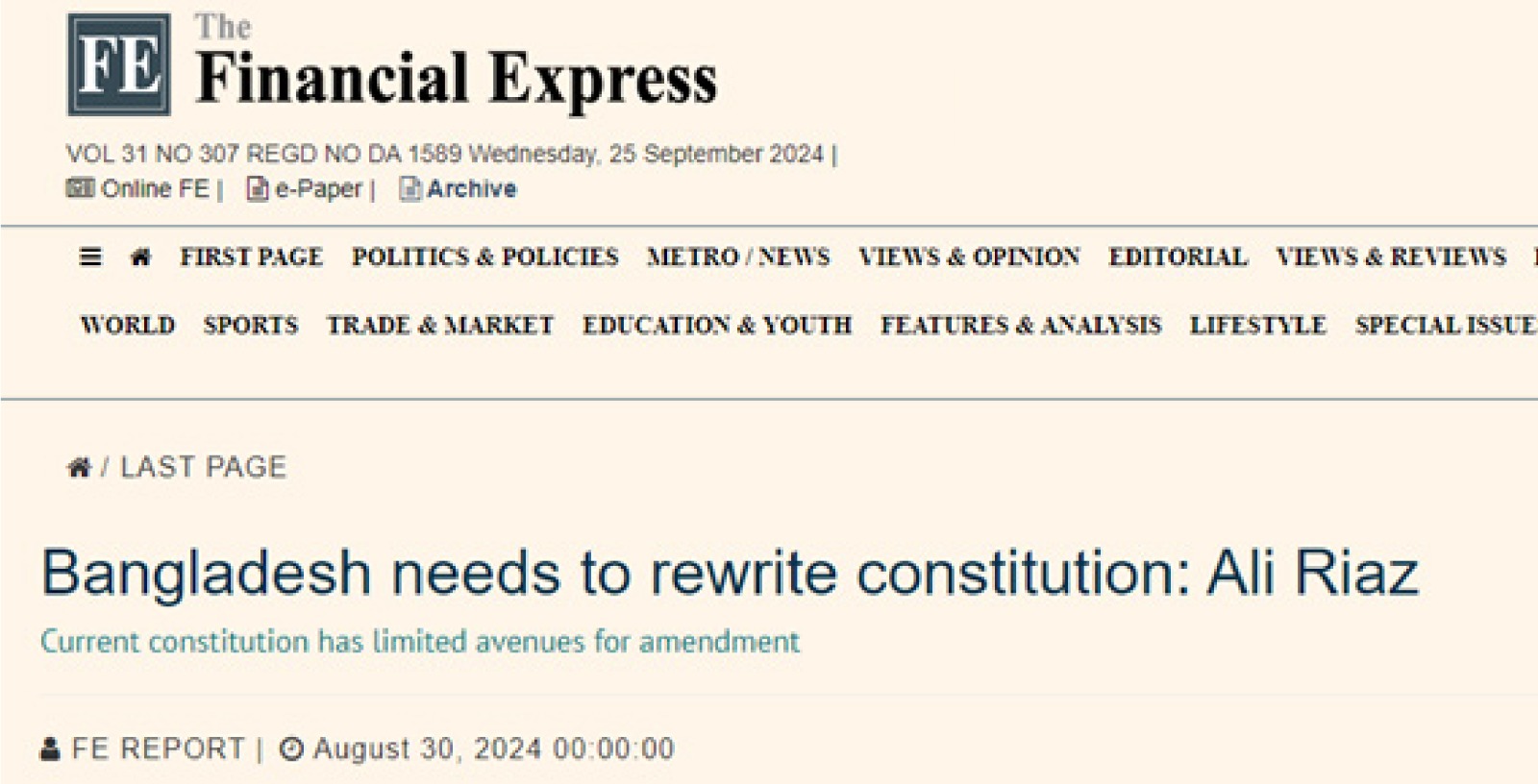
07
Audaciously, the present regime has stepped out to bring changes in the constitution and an open discourse has been floated even to rewrite the constitution. To fulfill the target, the government has designated Professor Dr. Ali Reaz from Illinois State University, a pawn of the USA and close aid to Dr. Yunus for influencing the political sphere of Bangladesh. Presumedly, there are deep concerns also among the people about Islamic forces attempting to influence the political landscape in alignment with Dr. Yunus to alter the constitution in ways that could undermine the core spirit of the Liberation War. Over time, some of these values have been altered or diluted, and possibly, now the present aim is to erase the mandate for Awami League in the 1970 election which ultimately led to the war of independence under the great leadership of the Father of the Nation Bangabandhu Sheikh Mujibur Rahman.
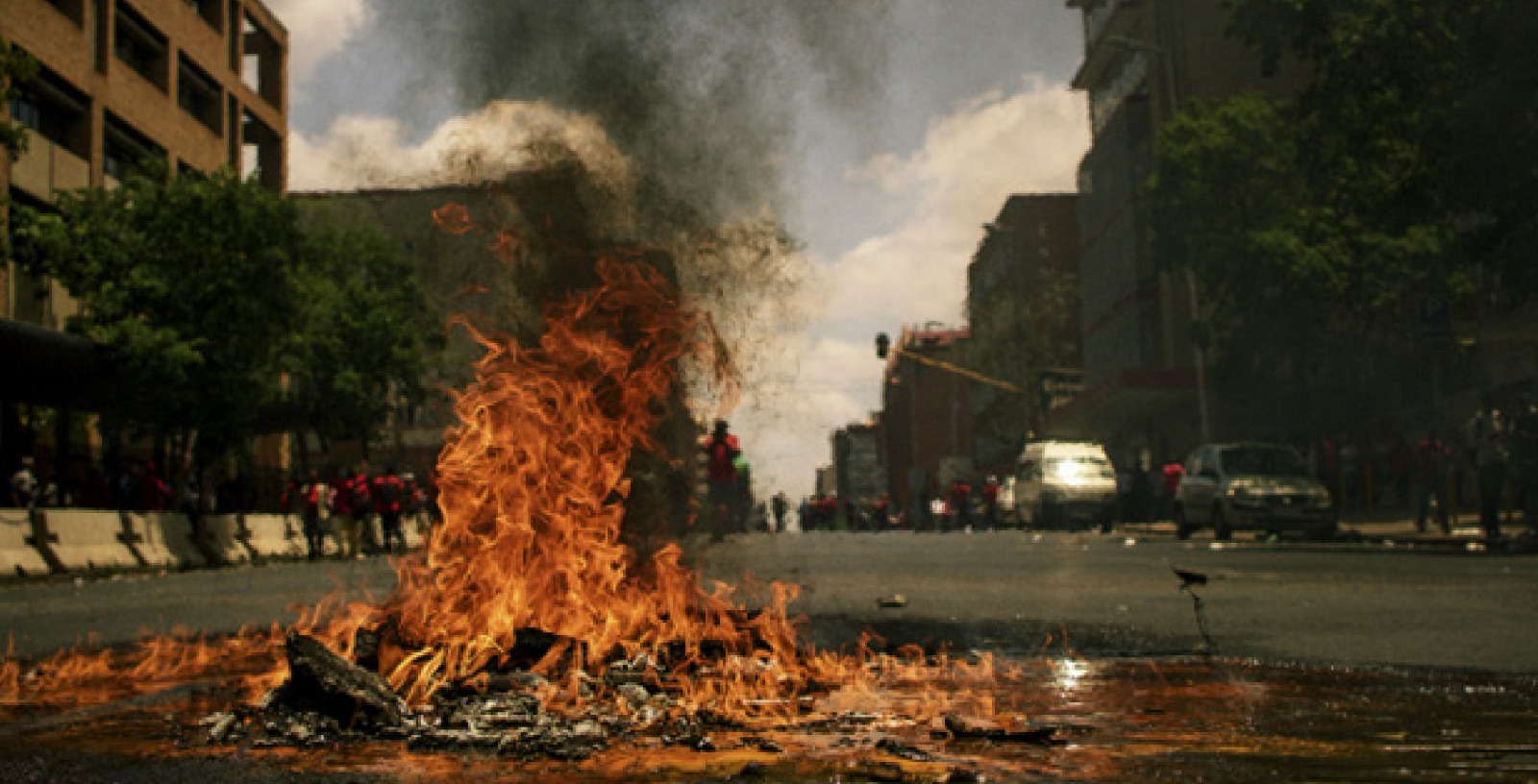
08
The international response to the atrocities committed by the Dr. Muhammad Yunus government needs deep attention from human rights organizations, foreign governments, and multilateral institutions. However, diplomatic pressure alone proved insufficient to curb the violence. In summary, the post-Hasina regime led by Dr. Yunus, with its troubling alliance with Islamic extremist groups, turned into a period of significant repression and brutality. What began as a hopeful political transition ended in chaos, with the country suffering under a repressive government that prioritized power consolidation over democratic principles and human rights.